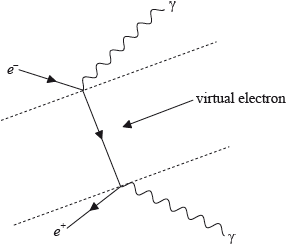| Date | November 2010 | Marks available | 2 | Reference code | 10N.3.SL.TZ0.D2 |
| Level | Standard level | Paper | Paper 3 | Time zone | Time zone 0 |
| Command term | State | Question number | D2 | Adapted from | N/A |
Question
This question is about leptons and mesons.
Leptons are a class of elementary particles and each lepton has its own antiparticle. State what is meant by an
Unlike leptons, the \({\pi ^ + }\) meson is not an elementary particle. State the
(i) elementary particle.
(ii) antiparticle of a lepton.
The electron is a lepton and its antiparticle is the positron. The following reaction can take place between an electron and positron.
\[{e^ - } + {e^ + } \to \gamma + \gamma \]
Sketch the Feynman diagram for this reaction and identify on your diagram any virtual particles.
(i) quark structure of the \({\pi ^ + }\) meson.
(ii) reason why the following reaction does not occur.
\[{p^ + } + {p^ + } \to {p^ + } + {\pi ^ + }\]
Markscheme
(i) a particle that cannot be made from any smaller constituents/particles;
(ii) has the same rest mass (and spin) as the lepton but opposite charge (and opposite lepton number);

Award [1] for each correct section of the diagram.
\({e^ - }\) correct direction \(\gamma \);
\({e^ + }\) correct direction and \(\gamma \);
virtual electron/positron;
Accept all three time orderings.
(i) \({\rm{u\bar d}}\) / up and anti-down;
(ii) baryon number is not conserved / quarks are not conserved;
Examiners report
Part (a) was often correct.
The Feynman diagrams rarely showed the virtual particle.
A significant number of candidates had a good understanding of quark structure.

